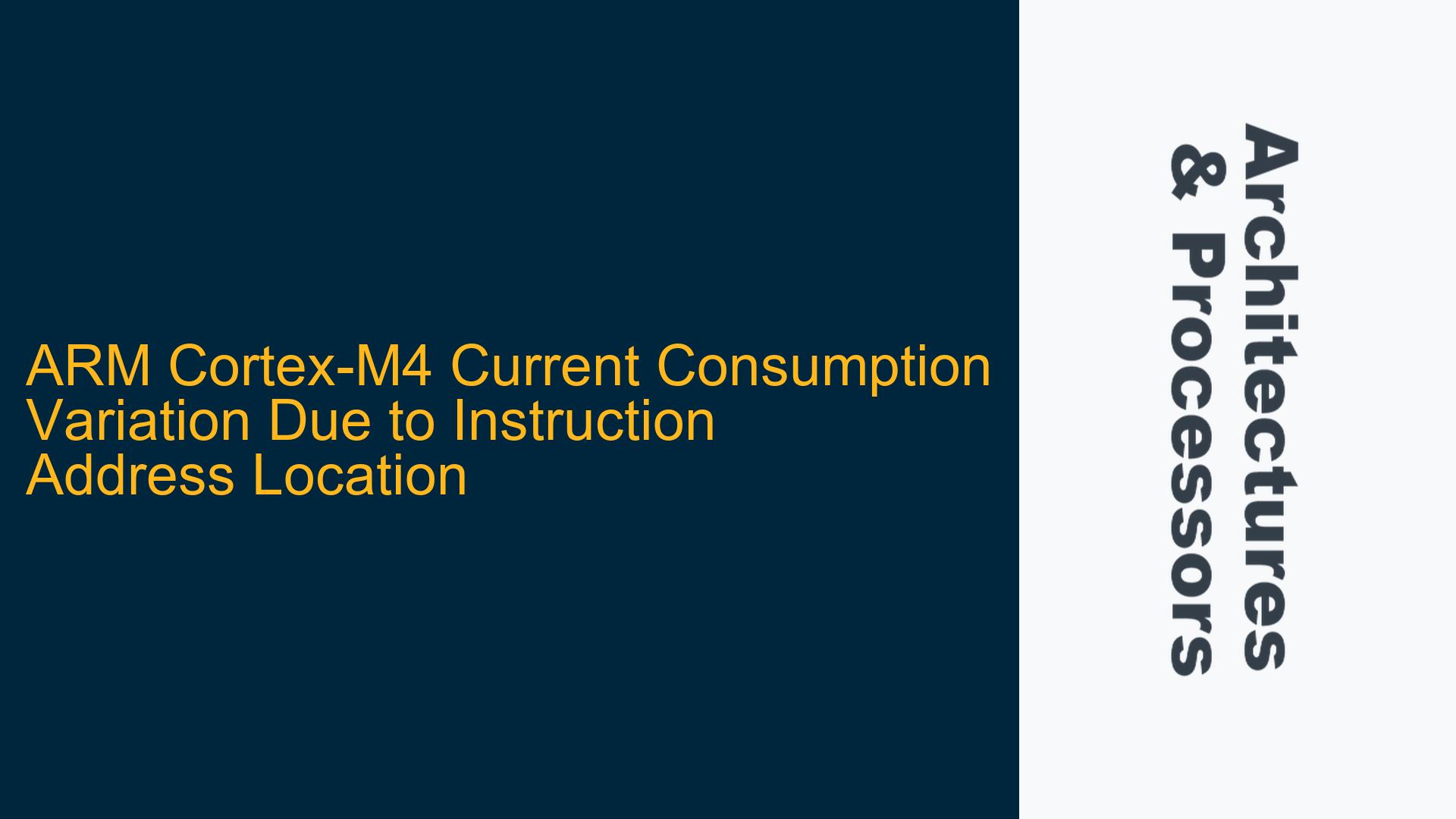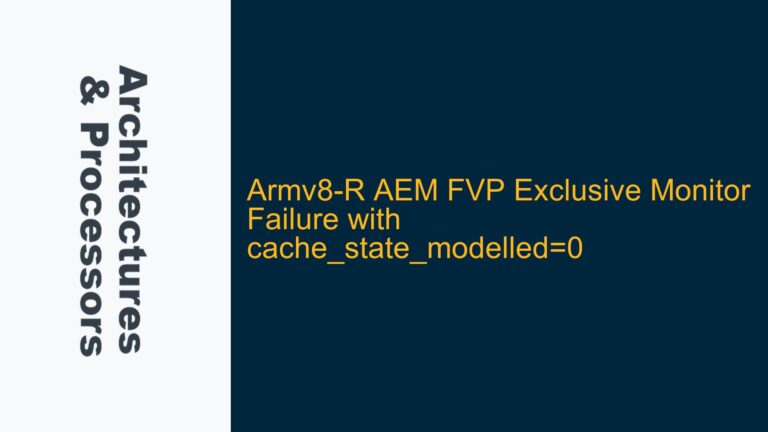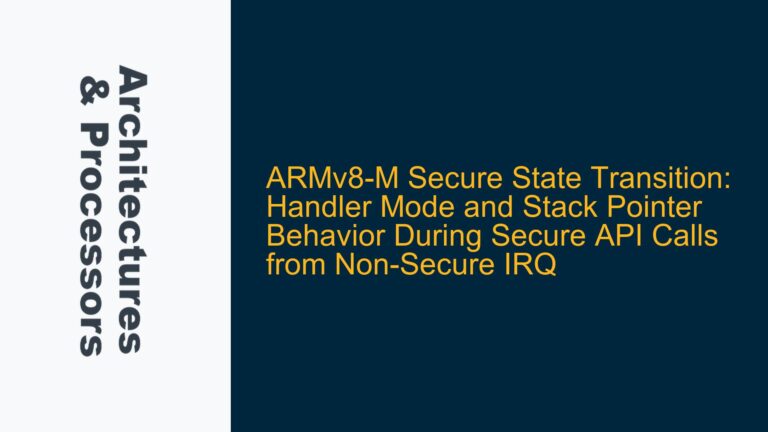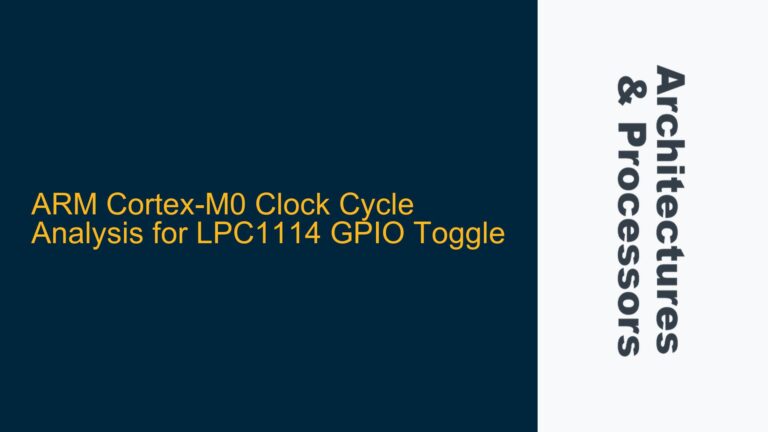ARM Cortex-M4 Current Consumption Variation Due to Instruction Address Location
Understanding Current Consumption Variations in ARM Cortex-M4 During NOP Execution
When working with ARM Cortex-M4 microcontrollers, one of the subtle yet critical aspects of low-power design and optimization is understanding how current consumption varies based on the location of instructions in memory. This variation is particularly evident when executing a sequence of NOP (No Operation) instructions, which are often used as placeholders or for timing purposes. Despite the simplicity of NOP instructions, their execution can lead to periodic fluctuations in current consumption, which are influenced by the address location of these instructions in memory.
The ARM Cortex-M4 processor, like many other microcontrollers, exhibits current consumption patterns that are not solely dependent on the type of instruction being executed but also on the physical location of that instruction in memory. This behavior is primarily due to the underlying memory architecture, address bus toggling, and the interaction between the processor and the memory subsystem. When the Program Counter (PC) increments, especially across certain address boundaries, the number of bits toggling in the address bus can lead to increased power consumption. For example, transitioning from an address like 0x0000FFFE to 0x00010000 results in more bits toggling, which in turn causes a temporary spike in current consumption.
To accurately measure and analyze these variations, it is essential to correlate the current consumption data with the specific instruction addresses being executed. This requires a combination of hardware and software techniques, including the use of GPIO toggling for synchronization, precise timing measurements, and an understanding of the memory access patterns of the Cortex-M4. By doing so, developers can identify the exact instruction addresses that result in the least current consumption, which is crucial for optimizing power-sensitive applications.
Memory Architecture and Address Bus Toggling Effects on Power Consumption
The ARM Cortex-M4 processor’s memory architecture plays a significant role in determining the current consumption patterns during instruction execution. The processor interacts with memory through an address bus, which is responsible for transmitting the memory addresses of the instructions being fetched. Each time the Program Counter (PC) increments, the address bus toggles to reflect the new address. The number of bits that toggle during this transition directly impacts the power consumption. For instance, when the PC transitions from 0x0000FFFE to 0x00010000, multiple bits in the address bus change state, leading to a higher current draw compared to a transition where fewer bits toggle, such as from 0x00000001 to 0x00000002.
This phenomenon is further complicated by the presence of memory subsystems like flash memory, which often incorporate features such as prefetch buffers and caches to improve performance. These features can introduce additional variability in current consumption due to the timing of memory accesses and potential pipeline stalls. For example, if the processor needs to wait for data from a slow flash memory, the pipeline may stall, leading to periods of reduced activity and lower current consumption. Conversely, when the prefetch buffer or cache is hit, the processor can execute instructions without waiting, resulting in higher current consumption.
Moreover, the ARM Cortex-M4’s pipeline architecture also contributes to current consumption variations. The processor’s pipeline consists of several stages, including instruction fetch, decode, execute, and write-back. Each stage consumes power, and the overall current consumption depends on the activity in each stage. When executing a sequence of NOP instructions, the pipeline remains active, but the power consumption can still vary based on the address location of the instructions due to the aforementioned address bus toggling effects.
Implementing GPIO Toggling and External Oscillator Synchronization for Precise Measurement
To accurately measure and correlate current consumption with instruction addresses, developers can employ techniques such as GPIO toggling and external oscillator synchronization. GPIO toggling involves inserting code to toggle a GPIO pin at specific points in the program execution. This creates a reference signal that can be used to synchronize current consumption measurements with the exact instruction being executed. For example, by toggling a GPIO pin at the start of a NOP loop and again at the end, developers can precisely measure the current consumption during the execution of that loop.
External oscillator synchronization takes this a step further by using an external oscillator to provide a precise timing reference. This method involves using a secondary microcontroller or a dedicated timing circuit to generate a high-frequency clock signal that can be used to track the execution of instructions with high accuracy. By synchronizing the external oscillator with the GPIO toggling events, developers can create a detailed timeline of instruction execution and current consumption. This approach is particularly useful for identifying periodic variations in current consumption and correlating them with specific instruction addresses.
However, it is important to note that the use of external oscillators and GPIO toggling can introduce additional complexity and potential sources of error. The timing of the external oscillator must be carefully calibrated to match the clock speed of the ARM Cortex-M4 processor, and any delays in the GPIO toggling code must be accounted for to ensure accurate synchronization. Additionally, the presence of cache misses or pipeline stalls can affect the timing of instruction execution, making it necessary to account for these factors when interpreting the current consumption data.
Analyzing Power Peaks at Address Boundaries and Optimizing for Low Power
One of the key insights from the discussion is the occurrence of power peaks at specific address boundaries, particularly when the Program Counter (PC) crosses a boundary where multiple bits toggle. For example, transitioning from 0x0000FFFE to 0x00010000 results in a higher number of bits toggling in the address bus, leading to a temporary increase in current consumption. This phenomenon is due to the increased capacitive load on the address bus when multiple bits change state simultaneously, which requires more energy to drive the bus to the new state.
To optimize for low power, developers can take advantage of this knowledge by carefully selecting the memory locations for critical code sections. By placing frequently executed code, such as NOP loops or other low-power routines, in memory regions where address transitions result in fewer bit toggles, developers can minimize the current consumption associated with address bus activity. This requires a detailed understanding of the memory map and the specific address boundaries that lead to increased power consumption.
In addition to optimizing the placement of code, developers can also consider the impact of data processing operations on current consumption. While NOP instructions are relatively simple and consume less power compared to more complex operations like multiplication or memory access, the overall current consumption of a program is influenced by the combination of instruction types and their memory locations. Therefore, a comprehensive approach to low-power optimization should consider both the type of instructions being executed and their placement in memory.
Practical Steps for Measuring and Optimizing Current Consumption in ARM Cortex-M4
To effectively measure and optimize current consumption in ARM Cortex-M4 processors, developers should follow a systematic approach that combines hardware and software techniques. The first step is to set up a controlled environment for current measurement, using a high-precision current probe and an oscilloscope to capture the current consumption data. The next step is to instrument the code with GPIO toggling points to create synchronization markers that can be used to correlate the current measurements with specific instruction addresses.
Once the measurement setup is in place, developers can execute a sequence of NOP instructions and record the current consumption data. By analyzing the data, they can identify patterns and periodic variations in current consumption, which can then be correlated with the instruction addresses using the GPIO toggling markers. This process may need to be repeated multiple times to ensure accuracy and to account for any variability in the measurements.
After identifying the instruction addresses that result in the least current consumption, developers can optimize their code by placing critical routines in these memory regions. This may involve modifying the linker script to control the placement of code sections or using specific memory regions for low-power routines. Additionally, developers should consider the impact of other factors such as cache usage, pipeline stalls, and data processing operations on overall current consumption.
In conclusion, understanding and optimizing current consumption in ARM Cortex-M4 processors requires a deep understanding of the memory architecture, address bus toggling effects, and the interaction between the processor and memory subsystems. By employing techniques such as GPIO toggling, external oscillator synchronization, and careful code placement, developers can achieve significant power savings in their applications. This level of optimization is particularly important for battery-powered devices and other power-sensitive applications where even small reductions in current consumption can lead to extended battery life and improved performance.






